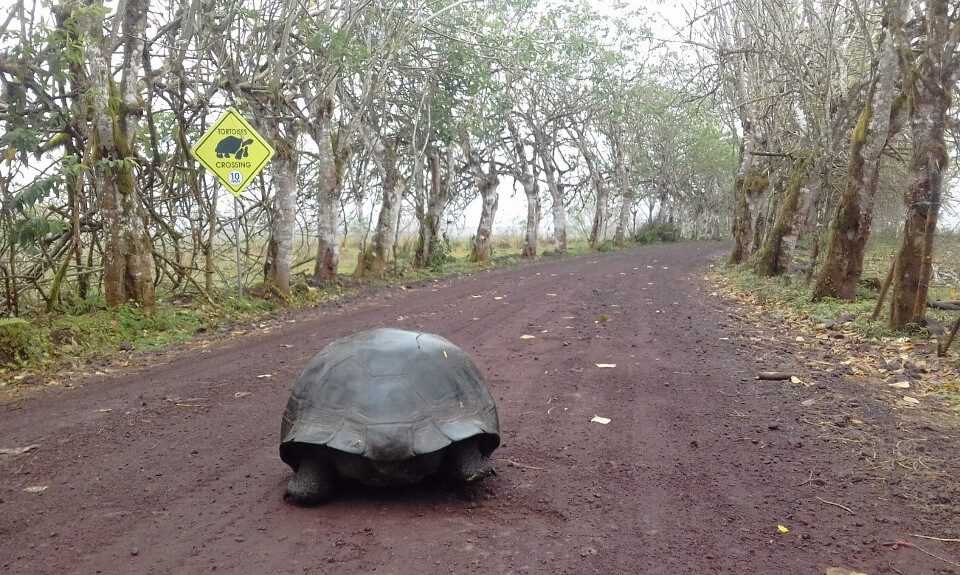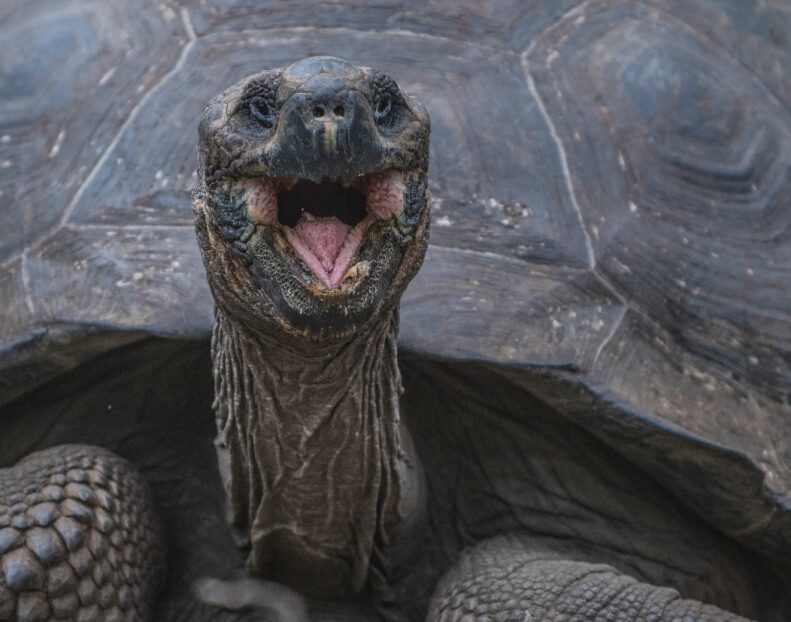An extensive and highly successful Galapagos giant tortoise restoration and conservation initiative has been underway for several decades on Santa Cruz Island, and thanks to new technology and the work of Galapagos National Park Rangers, this project has seen significant advances this past year.
TALK TO A DESTINATION EXPERT

Diego Zapata

Rosa Mena

Sandy Lara

Diego Zapata

Rosa Mena

Sandy Lara
Before man arrived at the Galapagos Islands, 14 species of giant tortoise roamed the archipelago, their numbers reaching the hundreds of thousands. However, giant tortoises have since faced horrific devastation with only 11 species currently alive in the islands, and this number in itself is only thanks to the incredible longevity of the tortoises and the hard work of the park. Despite extensive efforts to help tortoise populations, current numbers are still far from what they once were, with entire islands completely void of giant tortoises. Thus, every mark of progress is one of great significance and a reason to celebrate.
Current Galapagos Giant Tortoise Restoration and conservation efforts

Galapagos giant tortoises currently have a much greater chance of survival than they did fifty years ago thanks to the complete eradication of feral goats, the improvement of nesting areas, the significant reduction of introduced rats and the restoration of their natural habitats, among other factors. However their reproduction is still fragile due to the continued presence of introduced animals and, even without predators, their hatching success rate is no higher than 10% in the wild.
As a result, this year the primary efforts of the park have centered around the Galapagos Giant Tortoise Restoration Initiative and introduction of methods to protect tortoise nests in important breeding grounds. As of October this year, Galapagos National Park rangers had contributed to the protection of a total of 313 tortoise nests. The goal of these rangers is to systematically identify as many nests as possible using a global positioning system (GPS) and thus protect them from predators, such as feral pigs, by constructing a mesh fence around the nest.
In addition to this Galapagos Giant Tortoise Restoration Initiative, further work was carried out to support the tortoises’ successful reproduction. Control activities were implemented against introduced species such as ants, which can cause significant harm to eggs. Furthermore, rangers have been clearing access trails to aid baby tortoises that will be released by the park over the month of December; several eggs were removed from nests earlier this year to be transferred to the captive breeding program on Santa Cruz (where hatching success is around 75%). This work is extremely important, as hatching season for several species of tortoise is quickly approaching. Beginning the end of December, tiny tortoises will begin to appear on the islands to start the first year of what will hopefully be more than a century of life.

Who are these lumbering giants?
The Galapagos giant tortoise is the largest tortoise in the world, weighing approximately 250 kilograms and measuring on average 1.2 meters long, with the occasional tortoise weighing up to 400 kilograms. According to legend, they are extremely slow-moving creatures and spend so much time inactive that many have lichen growing on their shells. However, their size comes to advantage during hard times, as they are able to store enough nutrients and water to survive over a year without drinking or eating, in part thanks to a water storage area just behind their necks and their ability to eat up to 36 kilograms in one day.
However, perhaps more importantly is the role they have had in the development of modern-day evolutionary theory. These giant tortoises had an important impact on Charles Darwin when he visited the islands. As with the finches, he realized that the tortoises varied between islands and seemed remarkably well suited to their specific environment (which likewise varied between islands), as if they had evolved to better take advantage of their ecological niche!

Javier Garcia

Eduardo Silva

Carolina Escobar
START PLANNING YOUR TRIP

Javier Garcia

Eduardo Silva

Carolina Escobar
Get in touch for more
CONTACT US
Where to see Galapagos giant tortoises
Giant tortoises inhabit Isabela, Pinzon, Española, San Cristobal, Santa Cruz, and Santiago islands. Two of the main sites for observing giant tortoises are the tortoise-breeding center on Isabela and in the highlands of Santa Cruz, where tortoises thrive in their natural habitat.
How many iconic species BIG15 will you be able to see on your Galapagos trip? Check our Galapagos cruise Santa Cruz II itineraries to see the most fascinating and unique wildlife!


